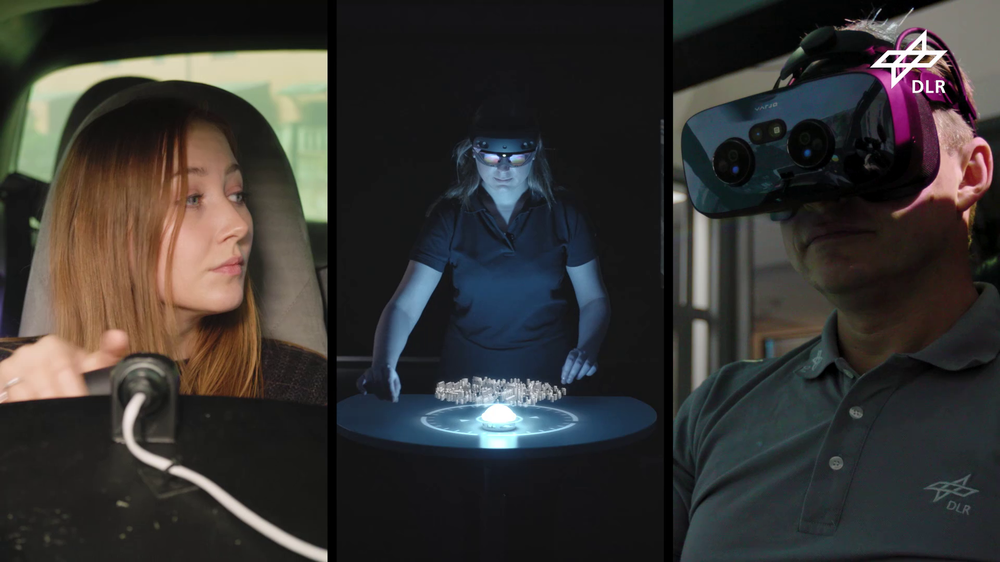Research Verification and Validation
The department's task is simulation-based verification, validation, and approval of vehicles and infrastructure in the transportation system.

Development of a multimodular simulation infrastructure in the iUSIM project
Your consent to the storage of data ('cookies') is required for the playback of this video on Youtube.com. You can view and change your current data storage settings at any time under privacy.
The DLR Institutes of Flight Guidance, Transportation Systems and Software Technology each have in-depth knowledge and expertise in various simulation technologies and possibilities. In order to reduce the workload in future projects, we are using our synergies to develop joint visualisation concepts. Our long-term goal is to develop a cross-institute, multimodular simulation infrastructure and to integrate existing simulators into it. The technical and methodological requirements for this were realised in joint cooperation. The focus here was on creating shared databases for simulation elements such as models, sounds and traffic routes.
The concept for the development of a multimodular simulation infrastructure includes the following tasks:
The results of the collaboration are tool chains for developing simulation objects and libraries for shared simulation environments that can be used as a whole or in parts by each institute. Such environments can, for example, be bundled into a large virtual map containing different components such as houses, railway stations, airports, bodies of water and green spaces. In addition, the concept of a common communication infrastructure for carrying out network simulations is being developed. Suitable tools will be developed for converting existing models (e.g. 3D objects, terrain data) into the software solutions of the individual institutes. An application case will be used to demonstrate that two different plants can use a joint simulation environment. In addition, a qualitative study was conducted on the social acceptance of unmanned aerial vehicles in a pedestrian simulator, in which the developed environment was used for the first time. The results of the demonstration and the study serve as a basis for publications. They also form a basis for future project acquisition activities.
The development of a joint tool chain will also improve co-operation between the institutes in the future and reduce development costs. Existing modules can be exchanged more easily and duplicate developments in the individual institutes can be avoided. This can reduce costs on the one hand and increase quality and acquisition opportunities on the other. In addition, the joint work makes it possible to analyse the interaction of several road users (airborne and ground-based) in comprehensive network simulations. In this way, we can continue to do justice to research into increasingly complex traffic scenarios in the future.
The expected work results are seen as an essential basis for future simulation studies and for further projects in the field of urban mobility and therefore represent an essential contribution to aviation research at DLR.
The work is a continuation of the collaboration initiated within the framework of the NGC-KoFiF and City-ATM projects.
Project title:
iUSIM - Institutsübergreifende, modulare Urban Mobility Simulationsinfrastruktur (Cross-institute, modular urban mobility simulation infrastructure)
Duration:
01/2021 to 12/2021
Project volume:
€ 114.706
Contracting authority:
Programme Directorate Aeronautics
Project coordinator:
DLR Institute of Transportation Systems
DLR institutes involved:
DLR Institute of Flight Guidance
DLR Institute of Software Technology
